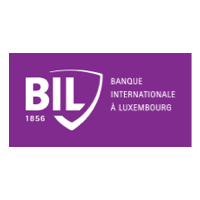The life insurance industry: What does the future hold?
By Dieter Putzeys, Insurance Consulting Lead at KPMG Luxembourg
espite changing consumer demographics, talent shortages and regulatory pressures, there are plenty of opportunities for growth in the life insurance industry. As life expectancy increases, customers are looking for policies that cover a longer lifespan. Younger generations today are also more open to taking out life insurance, and the Covid-19 pandemic undoubtedly highlighted the benefits of such policies.
KPMG Luxembourg’s team of insurance experts looks at how the landscape might change in the future and what it will mean for insurance players.
Customers seek better end-to-end experiences
Customers are becoming increasingly discerning and expect more touchpoints when considering whether to take out a life insurance policy. Multiple touchpoints (which include multi-channel interactions from sophisticated chat functions to in-person meetings with brokers) can allow them to fully grasp the benefits of specific products. Customers are also making decisions based on the overall customer experience (CX) insurers deliver, especially as other industries move to prioritize an enhanced CX. To become a provider of choice, insurers must focus on customer centricity and customer satisfaction.
More innovative products and services
As wealth management, life insurance and health insurance players converge, there is an opportunity for leading players to create products that offer end-to-end protection for customers of all ages and demographics. The result? A one-stop shop for customers and longstanding clients for insurers.
Competition will intensify
Social media influencers and digitally savvy agents with significant online followings will increasingly challenge the status quo of the traditional broker model. Insurers will also have to deal with more competition in the shape of ‘add-on’ life insurance policies embedded into other solutions or products.
The ever-evolving regulatory landscape
As ESG becomes more important to investors and customers, the regulatory landscape will likely evolve in tandem. Insurers will probably be required to provide more detailed ESG reporting which will likely be standardized across the industry. Data privacy regulations may also become more stringent, especially in light of how wearables and other devices gather and send personal data and health information.
Technology to advance strategic objectives
Insurers and distributors can generate more value for customers as they modernize their data architectures, allowing them to shift towards fully automated underwriting. AI will also become more prominent, transforming processes such as underwriting, claims processing and sales. What’s more, it could potentially serve as an ‘ethical gatekeeper’ that reduces biases and discrimination in model assumptions.
How will business models in the life insurance industry evolve?
1. Embedded solutions will see companies – typically in the wealth and health sectors – build partnerships to offer complementary services that meet all their customers’ needs (including life insurance). They will likely use various channels and marketplaces to reach new customers and offer fast, flexible services – especially to less affluent or younger customers who may be currently underserved in some parts of the market.
2. Through continuous product development, life insurance players will bring new, in-demand products to market faster, as well as deliver pricing flexibility driven by better data quality and analysis.
3. Insurers will look to offer enhanced value propositions and become more sophisticated in how they market their products and enhance their messaging. This includes educating their customers, enabling insurers to be a more integral part of financial planning conversations.
4. Enhanced business models may be an option for some insurers looking to divest capital away from non-core, underperforming service lines and reinvest it into sustainable, higher-growth and core business segments. Some players will complement this approach by driving diversification through investments. Businesses will also explore cost efficiencies as well as consolidate operational capabilities and improve operating margins.
Keys to success
To stay ahead of the game, insurance players need to move quickly and strategically to implement the necessary changes that will lead to an enhanced CX aligned with these evolving expectations.
In order to build critical mass to give more added value to their clients and partners, insurers need to use outside-the-box thinking and keep a sharp eye on potential M&A opportunities.
Ultimately, this means that the future front-runners in the insurance industry need to work backwards from long-term goals, breaking down specific tangible business objectives into smaller projects with big impact.
It is crucial for insurers to remain agile. Significant change comes with learning opportunities, and the companies that will be the most successful are those that implement strategic plans. They must, however, be prepared to do so imperfectly, failing fast, learning from mistakes and adjusting course as necessary.
Last but not least, life insurance companies must not forget the importance of human interaction. Although technology is become increasingly embedded in insurers’ operations, the human factor remains vital.
Are you looking to transform your business and successfully create an environment for managing ongoing change?
The future starts today! Reach out to KPMG’s team of industry experts who can help you on your optimization journey, ensuring you always keep clients at the heart of your business as well as manage enterprise risk and regulation every step of the way.
Our expert
Dieter Putzeys
Insurance Consulting Lead chez KPMG Luxembourg






















